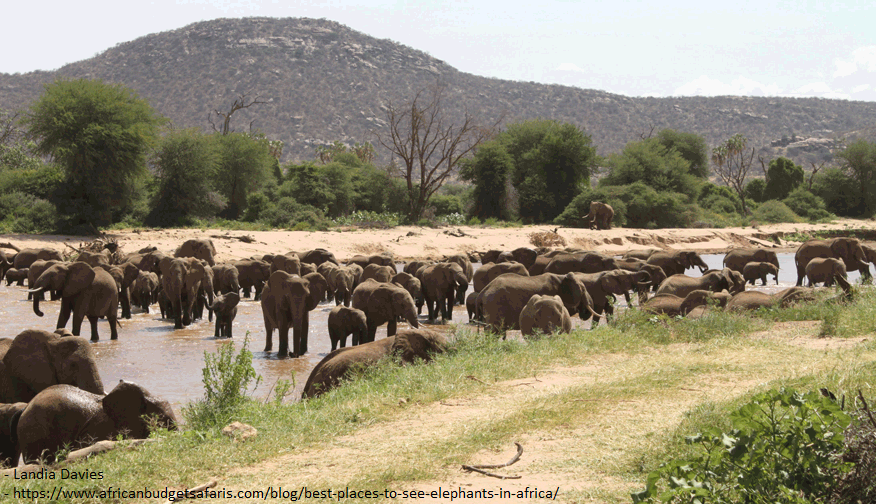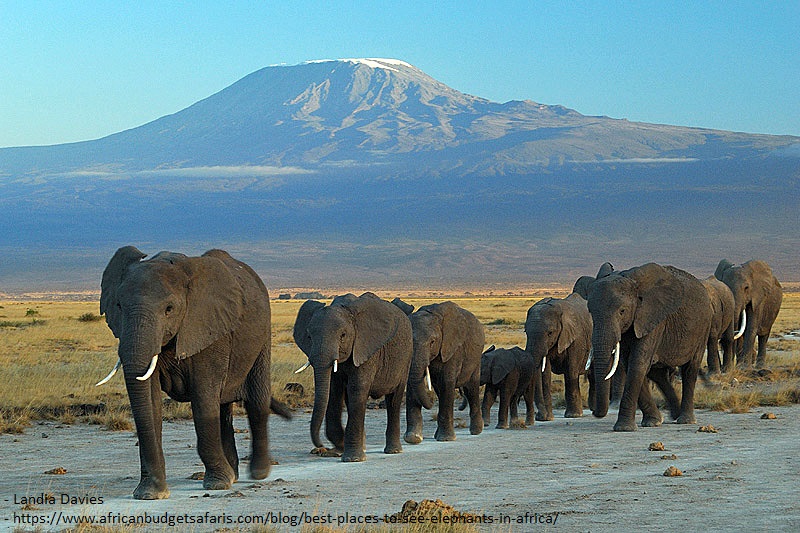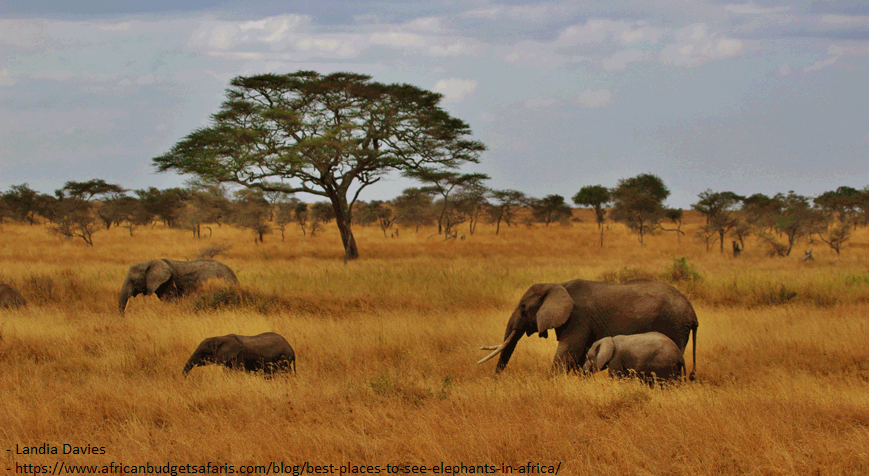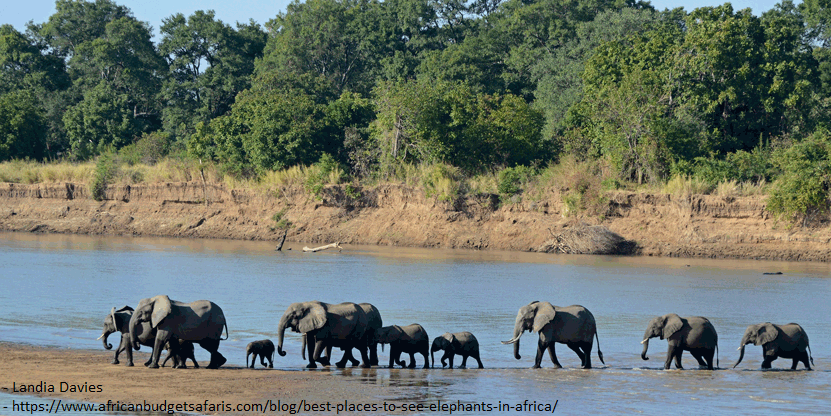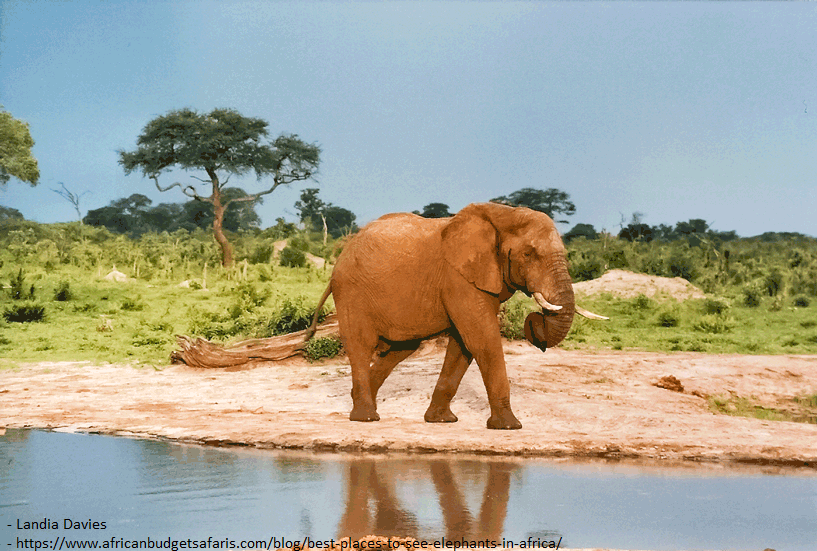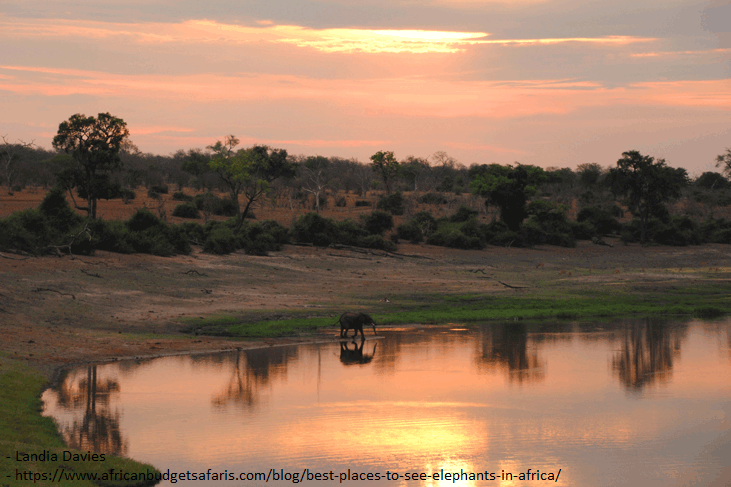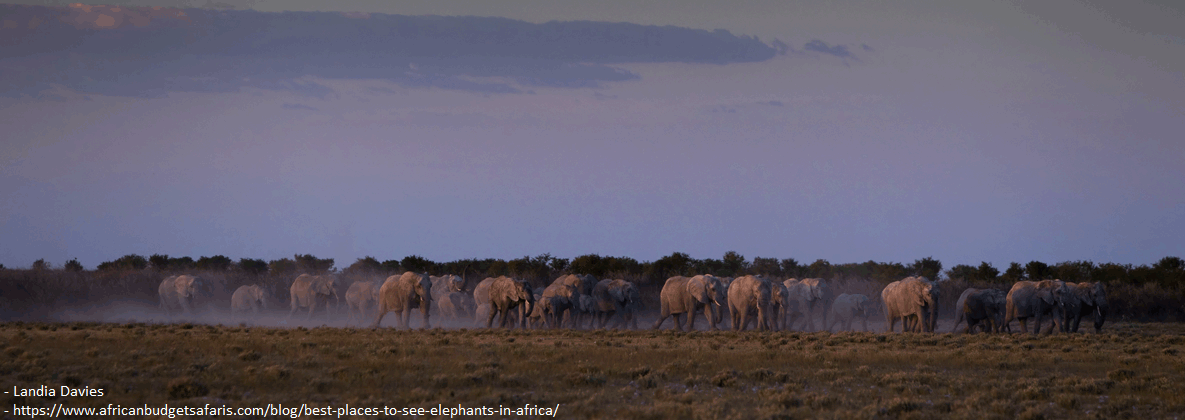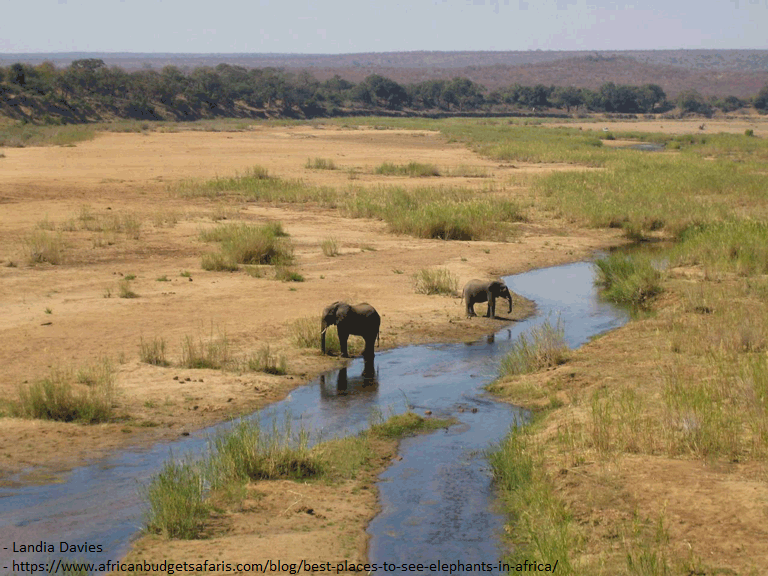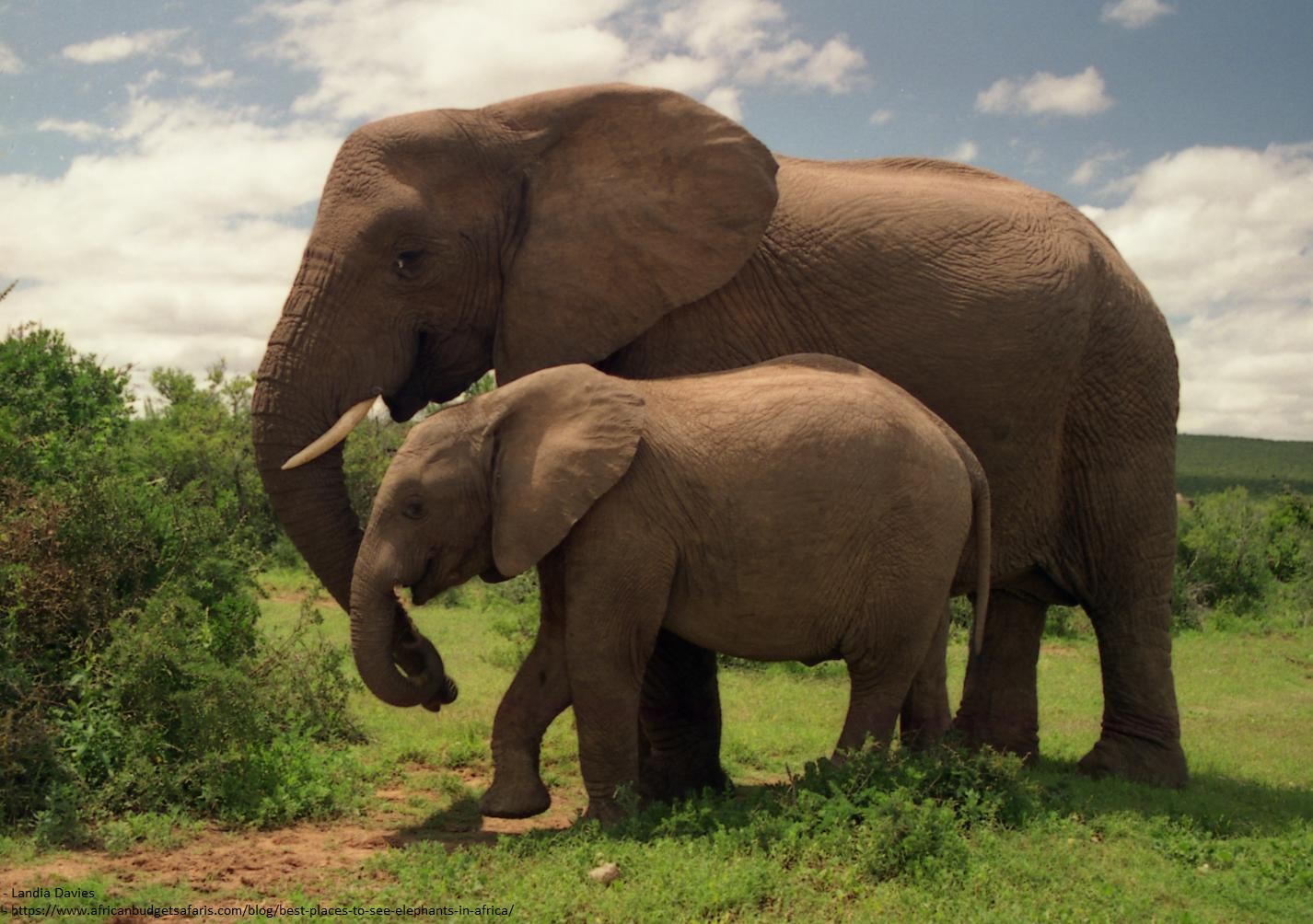Samburu National Reserve
– Kenya
Samburu National Reserve is a game reserve on the banks of the Ewaso Ng'iro River in Kenya. The park is 165 km² in size and is situated 350 kilometers from Nairobi. It ranges in altitude from 800 to 1,230 m above sea level.
Over 900 elephants live in or are visiting the Samburu Reserve throughout the year. The Samburu-Laikipia ecosystem hosts about 5,400 elephants in the area of around 28 490 km².
--Wikipedia, https://en.wikipedia.org/wiki/Samburu_National_Reserve
